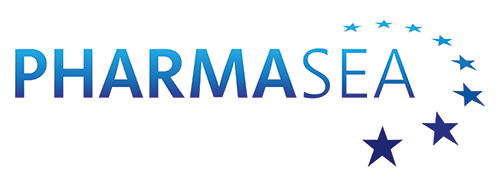Giuseppina Barsacchi
Dipartimento di Biologia
Università di Pisa
Ferdinando Boero
Dipartimento di Scienze e Tecnologie Biologiche e Ambientali
Università del Salento, Lecce
Gary G. Borisy
Director Marine Biological Laboratory (MBL)
Woods Hole, Mass. Usa
Peter Bukill
Director of the Sir Alister Hardy Foundation for Ocean Sciences and professor of Ocean Science, University of Plymouth, Plymoth, UK
Rita R. Colwell
Professor at University of Maryland College Park and at Johns Hopkins University Bloomberg School of Public Health Environmental Health Sciences, Center for Water and Health
Baltimore, MD, USA
Paul K. Dayton
Integrative Oceanography Division
Scripps Institution of Oceanography
University of California
San Dego, La jolla, CA, USA
Carlos Duarte
Director Instituto Mediterraneo de Estudio Avanzados
Mallorca, Illes Balears, SPAIN
Aldo Fasolo
Dipartimento di Biologia Animale e dell’uomo
Università di Torino
Richard Timothy Hunt – Premio Nobel per la Medicina 2001
London Research Institute, Clare Hall Laboratories
London, UK
Thomas Kiørboe
Professor, Technical University of Denmark
Danish Institute for Fisheries Research
Afd. for Havøkologi og Akvakultur, Kavalergården 6
Charlottenlund, DENMARK
Iain Mattaj
Director General European Molecular Biology Laboratory EMBL
Heidelberg, GERMANY
Christiane Nüsslein-Volhard - Premio Nobel per la Medicina 1995
Director of Dept. of Genetics
Max Planck Institute for Developmental Biology
Tübingen, GERMANY
Noriyuki Satoh
Department of Zoology, Kyoto University
Kyoto, JAPAN
Torsten Wiesel – Premio Nobel per la Medicina 1981
Vincent and Brooke Astor Professor Emeritus and President Emeritus
The Rockefeller University, Laboratory of Neurobiology
New York, NY, USA
Giuseppina Barsacchi
Dipartimento di Biologia
Università di Pisa
via G. Carducci, 13
56010 Ghezzano (Pisa) - Italia
 Peter Burkill
Peter Burkill
Marine Institute
Plymouth University
Drake Circus
Plymouth PL4 8AA - United Kingdom
Rita R. Colwell
Center for Bioinformatics and Computational Biology
University of Maryland
296 Biomolecular Sciences Bldg.
Room 3103
College Park, MD 20742 - USA
Roberto Danovaro
Dipartimento Scienze del Mare
Università Politecnica delle Marche
Via Brecce Bianche
60131 Ancona - Italia
Aldo Fasolo
Dipartimento di Biologia Animale e dell’Uomo
Università di Torino
Via Accademia Albertina, 13
10123 Torino - Italia
Bernard Kloareg
Station Biologique Roscoff
Place Georges Teissier - BP74
29682 Roscoff Cedex - France
Noriyuki Satoh
Marine Genomics Unit
Okinawa Institute of Science and Technology
1919-1 Tancha, Onna-son
Kunigami-gun
904-0495 - Japan
Sommario
Questo progetto mira a raccogliere campioni al South Shetland Trough (SST), vicino alla penisola antartica, una delle poche criogenici trincee d'altura in tutto il mondo.
Il PharmaDeep specifica di obiettivi sono:
(A) Raccogliere organismi marini provenienti da habitat di acqua fredda-profonda e che possono essere fonti uniche di prodotti naturali per il trattamento del cancro e delle malattie infettive.
(B) Eseguire la prima indagine biologica marina dell’habitat unico, la SST.
(C) Confrontare e contrapporre la fauna SST e i fattori che influenzano la distribuzione con altri ecosistemi simili.
(D) Studiare le interazioni di estreme condizioni fisiche e chimiche per valutare l'abitabilità di altri spazi planetari.
Cosa facciamo
La SZN sarà principalmente coinvolta nel campionamento di organismi zooplanctonici e fitoplanctonici per successiva identificazione tassonomica, screening di bioattività e analisi chimiche.
Partners
SZN, IBP-CNR, University of Aberdeen, Universitat de Barcelona, Insituto Español de Oceanografía, BioBridge, University of Chile, Nicolaus Copernicus University, Edinburgh University
Area di Ricerca
Biotecnologie Marine
Ruolo della SZN
Partner
Principal Investigator
Project Manager
Alan Jamieson
Durata del progetto
Ottobre 2015 - Giugno 2016
Istituzioni finanzianti
European Commission, under the EU EUROFLEETS2 program grant agreement n° 312762
Personale coinvolto
Adrianna Ianora, Principal investigator
Chiara Lauritano, Post-doc
Christian Galasso, PhD Student

Sommario
Ocean Medicines rappresenta una rete di centri di ricerca accademici e piccole e medie imprese di tutta Europa, con comprovata esperienza nei settori dell’alta istruzione e della formazione, allo stato attuale, altresì dotato di competenze e infrastrutture scientifiche e tecniche. L'obiettivo è di creare una rete di collaborazione e di scambio di conoscenze tra i partner industriali e accademici al fine di sviluppare molecole con attività antitumorali o anti-infettive già identificati dal consorzio a partire da microrganismi marini. Per raggiungere questo obiettivo sarà istituito un programma di mobilità per creare una nuova generazione di ricercatori nel campo della biologia marina, che saranno formati sulle tecniche di isolamento di composti da bioattivi a partire da batteri/microalghe e sul come ottimizzare la loro produzione attraverso scale-up semi-industriali per ulteriori sviluppi e test di tossicità a livello pre-clinico. Il programma Ocean Medicines considera anche le attività di commercializzazione, innovazione e imprenditorialità, tra cui fornire gli strumenti formativi sul come iniziare una nuova attività e come favorire una carriera industriale a ricercatori distaccati. La creazione di questa rete di ricerca internazionale, con i suoi effetti sinergici, contribuirà in modo significativo a condurre Istituti / PMI a livelli di formazione avanzata nel campo della scoperta di nuovi farmaci dal mare.
Cosa facciamo
SZN è coinvolto nel WP2 che riguarda specie di batteri e microalghe che producono metaboliti bioattivi con attività antitumorali/antinfettive; queste specie saranno sottoposte a coltivazione massiva in diverse condizioni di luce / temperatura / pH per ottimizzare la produzione dei metaboliti attivi. Estratti e frazioni saranno ulteriormente esaminati e analizzati chimicamente dagli altri partner.
Partners
SZN, IBP-CNR, SeaLife Pharma, eCoast, Epi-C, UiT, UNIABDN, MEDINA, UWC
Area di Ricerca
Biotecnologie Marine
Ruolo della SZN
Partner
Principal Investigator
Project Manager
Donatella De Pascale
Durata del progetto
December 2015 - December 2019
Istituzioni finanzianti
Commissione Europea, Settimo Programma Quadro
Personale coinvolto
Adrianna Ianora, Principal investigator
Giovanna Romano, Ricercatore Esperto

Sommario
Il progetto PharmaSea è focalizzato sulla ricerca delle biotecnologie marine, sviluppo e commercializzazione di prodotti biotecnologici, inoltre ha l’obiettivo di unire ricercatori e specialisti di settori interdisciplinari, sia accademici che industriali, al fine di ricercare nuovi prodotti per tre settori di mercato: salute (infezioni, infiammazione, malattie neurodegenerative), cosmesi e nutrizione. Nonostante l'enorme potenziale delle biotecnologie marine, lo sfruttamento, in particolare a scala commerciale, è stata ostacolato da una serie di vincoli. Questi riguardano l'accesso (fisico e legale), la genetica degli organismi, isolamento dei composti, delucidazione delle strutture chimiche e validazione affidabile precoce dell’attività biologica di tali composti. PharmaSea si pone come obiettivo di risolvere tali problematiche. Nell’ambito del progetto sarà analizzata un’ampia varietà genetica compreso collezioni di microorganismi marini possedute da alcuni partners e nuove collezioni di ceppi campionati in condizioni ambientali estreme (e.g. siti marini profondi, caldi e freddi) per produrre nuovi composti con caratteristiche appropriate per lo sviluppo da parte delle SME. L'obiettivo globale di PharmaSea è produrre due composti ad ampia scala e promuoverli nelle valutazioni pre-cliniche.
Cosa facciamo
La SZN sarà principalmente coinvolta nel campionamento di organismi zooplanctonici e fitoplanctonici per successiva identificazione tassonomica, screening di bioattività e analisi chimiche.
Partners
SZN, Katholieke Universiteit Leuven, The University Court of the University of Aberdeen, MarBio, eCoast, Biodridge, MEDINA, University college Cork, BIOCOM, CNR, Universidade de Santiago de Compostela, The Royal society of chemistry, C-LECTA GMBH, Denmarks Tekniske Universitet, DEEPTEK, Advanced chemistry development UK, Wuhan University, Institute of Microbiology Chinese Academy of Sciences, University of the Western Cape, Instituto de Dinamica Celular y Biotecnologia, Asociacion Instituto Nacional de Biodiversidad, Union Internationale pour la conservation de la nature et de ses ressources, University of Waikato, SeaLifePharma.
Area di Ricerca
Biotecnologie Marine
Ruolo della SZN
Partner
Principal Investigator
Project Manager
Peter de Witte
Durata del progetto
Ottobre 2012 - Ottobre 2016
Istituzioni finanzianti
European Commission, under the 7th Framework Programme (FP7/2007-2013 under grant agreement n° 312184)
Personale coinvolto
Adrianna Ianora, Principal investigator
Giovanna Romano, Experienced Researcher
Francesco Esposito, Technologist
Chiara Lauritano, Post-doc










